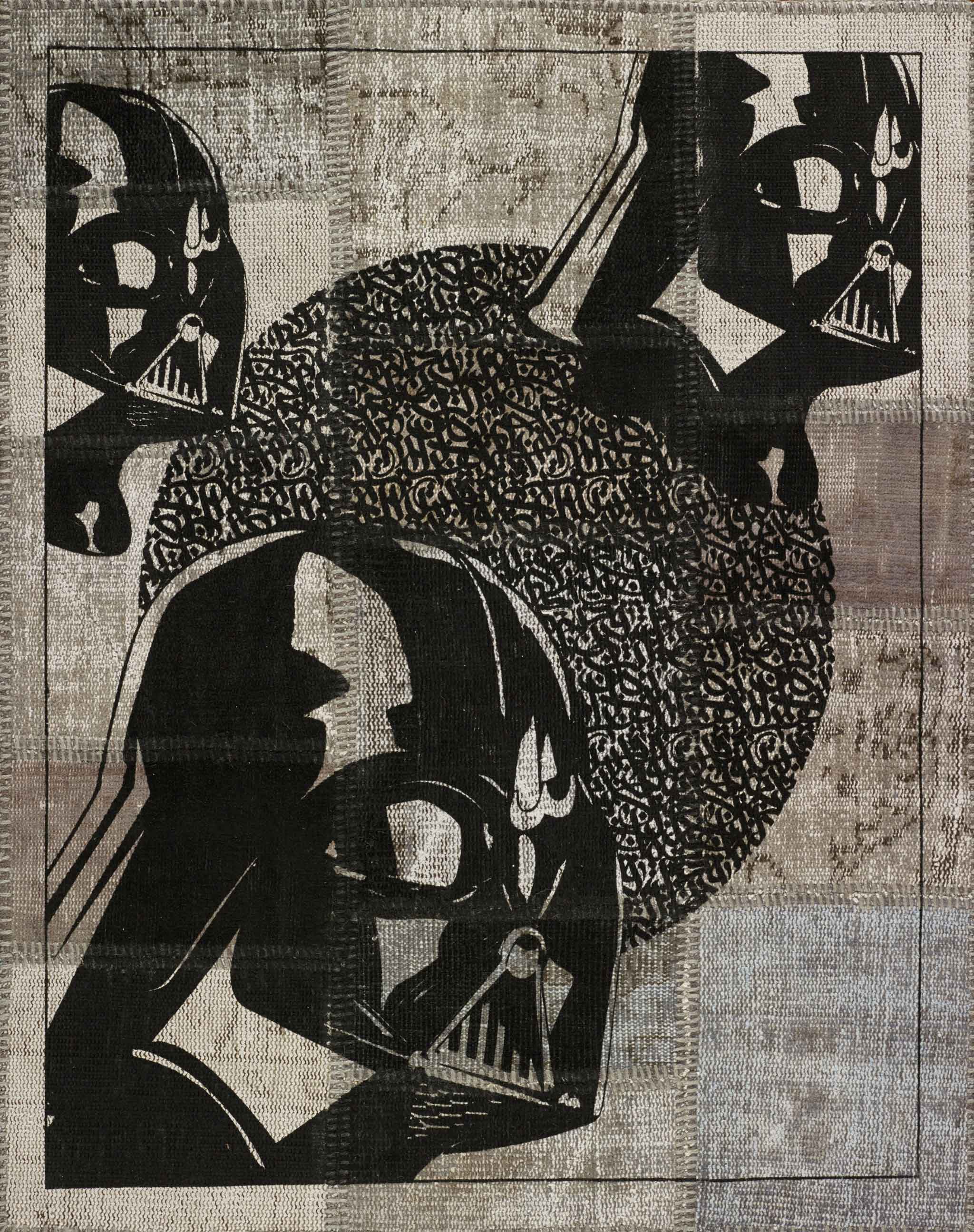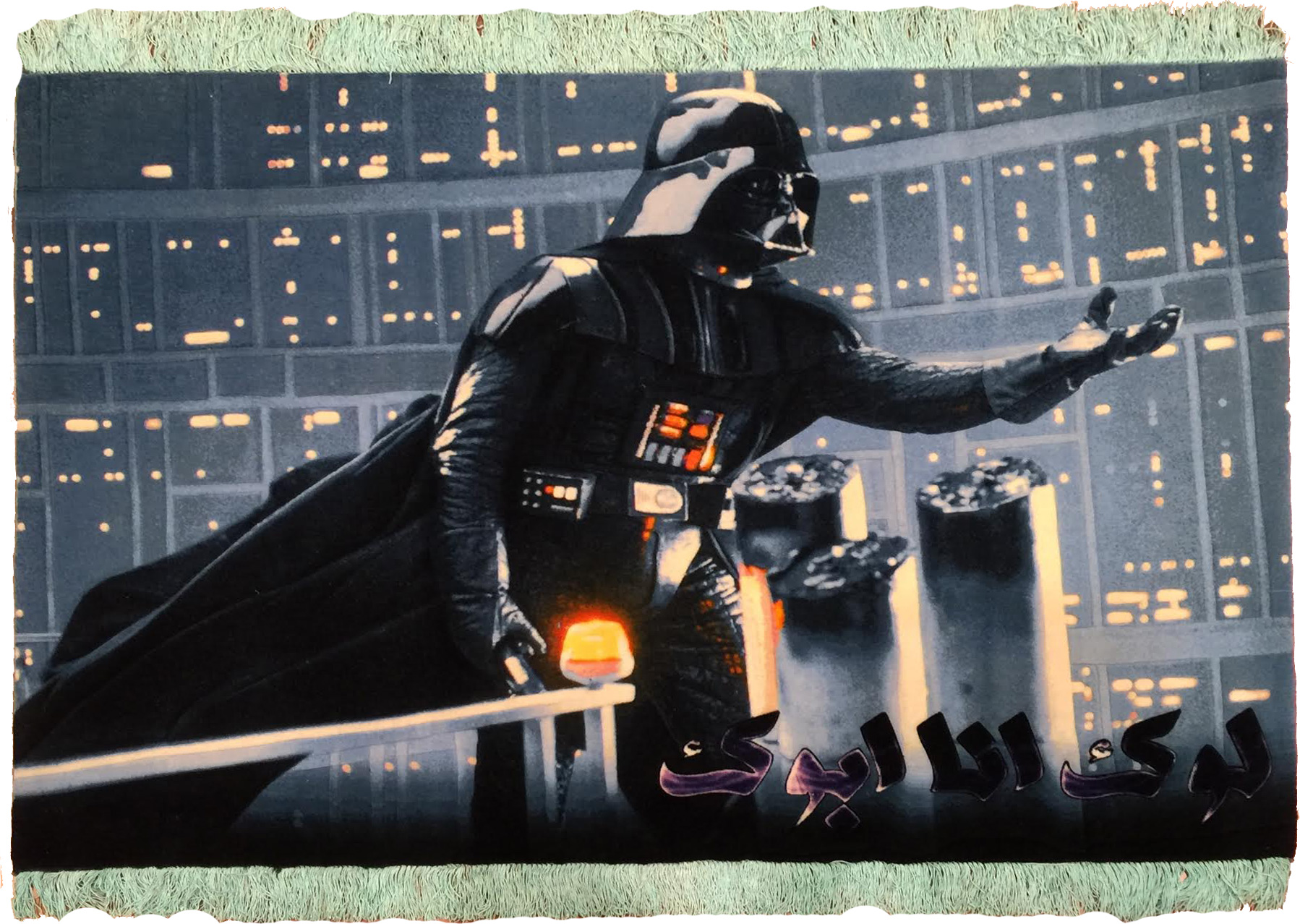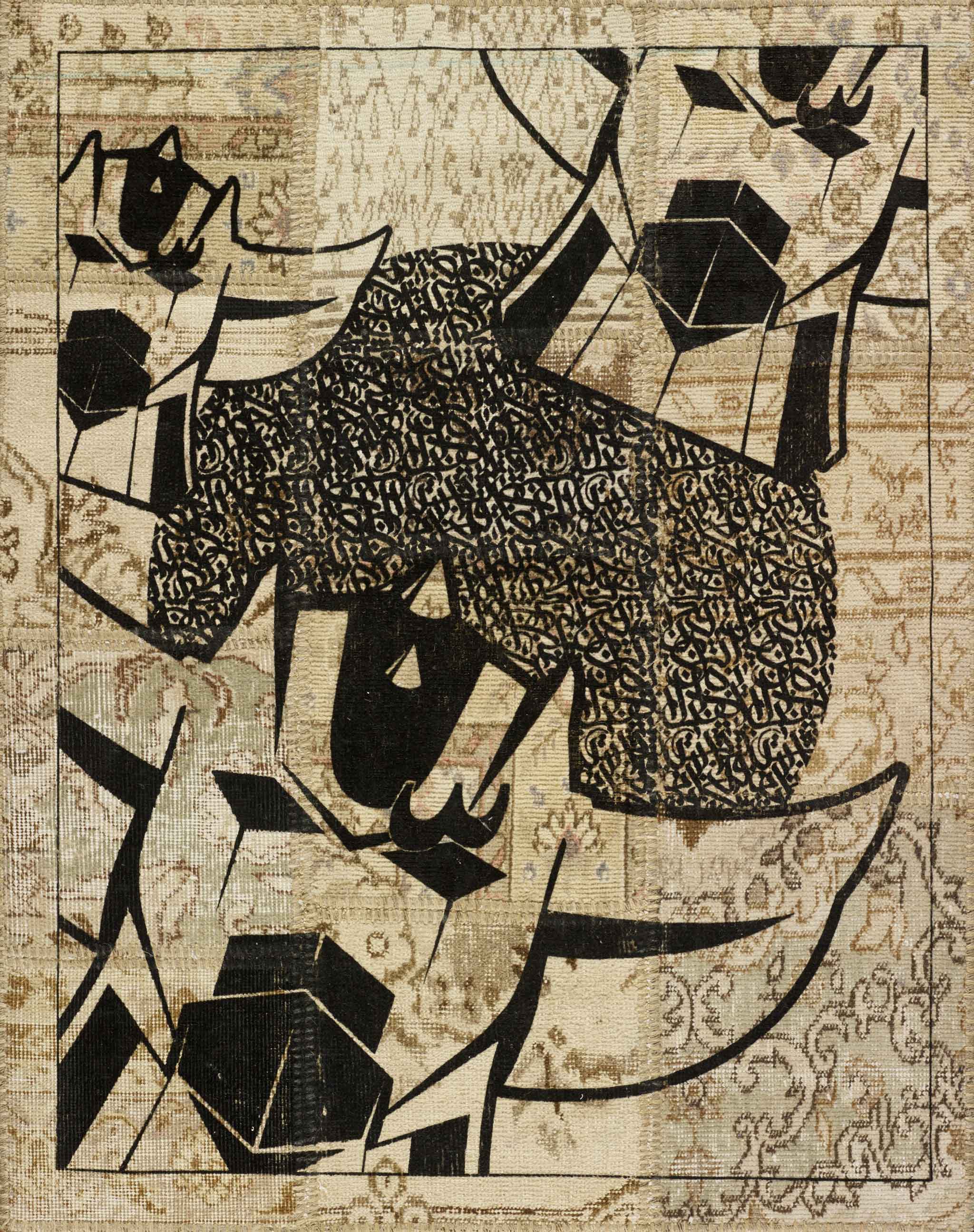I knew of Hadi Maktabi of Hadi Maktabi Rare Carpets and Antiques long before I met him, though I am not certain how it came to be. Perhaps it was his reputation as someone genuinely and eminently qualified to lecture (in the schooled manner, not the scolding) on the topic of antique Persian carpets, or perhaps it was his embrace of all things modern when it comes to social media, promotion, and brand awareness. Maybe it was the juxtaposition in this forced dichotomy of a man who on one hand promotes himself via Instagram and the like, yet eschews most modern carpet production; I cannot help but wonder his process of deciding what modern things to accept and what to reject. Maybe it is his near zealous obsession with quality and the rare or his love of video games and pop-culture. Regardless of how, it is the latter which brings us to be talking about and with him today.
We formally met in Istanbul in October 2016 during the Inaugural Istanbul Carpet Week, which as an aside, has proven to not only be educational, but also a fantastic buying and networking experience unmatched by other shows and events I have attended because of its relative intimacy, camaraderie, and unique setting at the literal crossroads of world history. Mr. Maktabi, oops, sorry, Dr. Maktabi (he has his PhD from Oxford in Islamic Art with a focus on Antique Persian Carpets) presented on Azerbaijan Rugs during the week’s Istanbul International Carpet Conference and it was during one of many shared bus rides to somewhere, we enjoyed a cursory ‘tell me about yourself’ conversation that has continued and blossomed until now when we find ourselves discussing something (decidedly?) modern with an expert in antiquity of sorts.
So without further adieu let us discuss the, and I’m quoting Hadi here, ‘eponymously and brilliantly entitled ‘Darth Vader” rug, and more of course.

The Ruggist (MC): Can you describe the way the carpets were made? What are the base carpets? If I may also ask, whom is doing the work?
Hadi Maktabi (PhD): Working with acclaimed local design crew Ashekman, we innovated a method of silkscreening on handmade Oriental rugs. Repeated trials over a period of four (4) months led us to an accurate sense of pile height, knot type, and background colour needed for this novel process whereby the design is added and not woven in. With that in mind, I sourced a selection of vintage midcentury old rugs in a brief range of light tones (sky blue, earthy brown, creamy ivory, caffe au lait, beige, and light charcoal grey). They were patched up into fifty (50) rugs all of size 100cm x 120cm (~3ft x ~4ft). I went forward with a theme of Heroes & Villains | Deus Ex Machina, a scifi/anime/manga range of robotic/android characters (part man, part machine) to be as far away from traditional decorative carpet design. Upon receipt of the customized vintage rugs, they were taken to the local ‘imprimerie’ (‘printer’ in French because English doesn’t sound quite right) in Beirut where we had done our tests. And voila! A limited edition of ten (10) each of five (5) different character rugs were finished, all with stylized arabic calligraphy to root them in our culture. Each character rug is unique across five (5) colour backgrounds, however, the background field design of each original rug is still there. So each is practically an edition of one (1).
MC: It’s a limited edition of ten (10). Do you think limited edition has appeal in carpets? Is ten too many? Not enough? Where do you think the so-called sweet spot is between maximum profitability, if we are indeed concerned about maximizing that, and long term appreciation based on scarcity?
PhD: From my experience with these and with the market, I think limited edition rugs appeal to buyers when the subject matter actually matters. People don’t react so well and don’t care for limited decorative rugs, but they do when it tells a story. Like a limited Seirafian with a theme or a superhero rug. The range of edition by number is a factor of its material value. For a $20,000 rug, limited shouldn’t be more than two or three (2-3) but for $1,000 rugs it can be more. So many producers claim they are making limited rugs but if they sell well they go ahead and make more, not realizing it will affect them long term. If production costs and markup are sensibly handled then the right minded producer should be able to produce a small number (ideally averaging five (5)) and then move on to another collection. Vader and Grendizer, as I suspected, were so popular that I could have gotten away with double the amount.
MC: Does the calligraphy mean anything?
PhD: Arabic calligraphy, or calligraffiti as it is apparently called. The letter shapes do not actually mean or say anything. But as a whole, such usage of Arabic type embeds art like ours (and thousands others made annually in the Mid East) in our corner of the world and tie them into our own culture. The lettering simply indicates that the artists are proud of their roots and are taking the fan tribute further by shedding a more local light onto an international icon. So Darth Vader or Grendizer with this distinctive Arabic calligraffiti is a shade or nuance of that iconic figure as seen through Arab eyes.

MC: How important is quality in the absolute sense of the word? Must a carpet such as ‘Vader’ always be made with the best of everything, or is there a place for compromise when the desired outcome is such that the best may not be necessary?
PhD: Quality matters less grosso-modo today than it used to. Fewer buyers are concerned with knot count and what the fibre is made of. I’ve handled it both ways. My silkscreened rugs are very affordably priced at $1,200 USD apiece with a certificate by me and the designers. Perfecting the process took me time but I’m not making the buyer pay for that. My markup is modest but it’s a labour of love and I’m happy I’ve reached out to a younger and wider audience. In parallel, working with a team of Persian graphic designers (not carpet designers), we came up with a number of scifi themes that we wove in Tabriz at an impressive finesse of 9×9 knots per sq cm (~530 knots/sqin), on coloured silk fringes with profusive silk highlights. Weaving each rug took a year plus. With designing and finishing it’s around two (2) years. Each is individual and unique. I won’t repeat any. These each have a colour range of approximately twenty-five (25) tonalities as opposed to the single black pigment of silkscreening. We’d had three (3) pigments in mind for the vintage rugs but costs would have spiked about an additional fifty percent (50%) so we opted out to maintain a lower selling price. The Persian rugs are finely woven, unique, and impressive. This is most evident when you see them up close and appreciate the laborious hand clipping process that took more than a month per rug to create a deeply carved/embossed effect where the difference in height in pile reaches 1.4 cm ( ~5/8in).
MC: As you may well know I have written extensively about Copyright and find the modern day application of Copyright Law, particularly as it applies to things we humans make, most intriguing, if not also broken in many ways. How did you handle the copyright with such iconic imagery?
PhD: We had long discussions with the designers Ashekman, who have done a fair bit of stuff like this in/on other media. In the world of street art and pop art, I came to understand that artworks like ours are what are called ‘fan art’ done in tribute to and inspired by famous characters of pop media and mass culture. Just take a quick look online at the vast amount of Star Wars fan art whereby all manner of people adapt characters like Darth Vader and others, parody them, present their own take on them, et cetera. What we are doing is similar and not commercially driven, hence the extremely low numbers made. There is no profit to speak of, the aim of the whole exercise was to try out a new technique in carpet production that also served as good publicity while being a whole load of fun as well.
Scifi fairs are held regularly in Beirut, Dubai, Kuwait et cetera as they are in Europe and America; forums and platforms where independent designers (whether professional or otherwise) showcase their work where they take a character like Darth vader or Superman and fiddle around with it. Darth Vader has been a mass cultural icon for 40 forty (40) years now since 1977. Ashekman did not scan or copy a pre existing DV poster or photo, they actually drew him from scratch. We do it because we are fans of these characters and take pride in our little effort to bring extra happiness to people not unlike ourselves who like collecting or owning a version of the character with a twist.
MC: As you said in our correspondence prior to this article: ‘But art, as you say, is a higher level of aesthetic and many/most rugs woven in Asia (Turkish patchworks to Persian Nain to Afghan repros to Paki copies thereof to Nepalese design rugs and their cheaper Indo-Tibetan copies) do not strive to reach that. Some enlightened souls are actually making stuff that matters, some in design and some in art.’ What is it then that contributes to a ‘carpet that matters’ and has a ‘modicum of charm?’ How do you feel that relates back to the Vader rug?
PhD: Carpets that matter, with charm and character, are those that are quite confident and different while being embedded in a wider socio-cultural happening. Decorative stuff simply will have a rough time impacting that or achieving that, especially because fashions change and tastes are different. But linking a rug or artwork to a current trend or happening (especially something that isn’t simply a fad) is a way to do that. Darth Vader (and the Star Wars universe broadly) is/are arguably one of the strongest brands in the world at the moment, very hip and happening (Rogue One! The end sequence!) yet possessed of a vibrant nostalgic factor and marketing appeal. [EDITOR’S NOTE: The email correspondence regarding this article took place around the time ‘Rogue One: A Star Wars Story‘ opened at theatres.] Your average Asian producer or workshop owner won’t get why it matters or who to sell it to or how to market it let alone how to design and do it… so the rug retains its classiness. Sometimes these ideals or themes may be localized to a region or country, sometimes more globally so. Vader is recognizable anywhere but Grendizer resonates more with an Arab and Latinate European audience (Franco-Italian) which had to do with TV broadcasts back in the 70s/80s.

MC: I’ll ask one of your rhetorical questions from our earlier emails back to you: ‘Has soul been sacrificed for a global Ikea-like culture so that these modernist creations are disposable like a home assembled bookcase or generic modern sofa?’
PhD: YES. [Emphasis Hadi’s] People buy ‘em and throw ’em away once bored with ‘em or once they’ve served their purpose or once we move house or so forth. Nothing to cling to. No sentimental factor, no story, nothing. All in all, the reputation and standing of the Oriental carpet has been denigrated. My clients who bought a Darth Vader or Robocop [Not shown.] or Grendizer rug did so because they grew up idolizing this character and they want to take it home with them, many to showcase to their children rather than their socialite friends. The majority did not buy them with a place in mind at home or the office to place them in, they simply wanted/needed to own one.
MC: Finally, if I were to insist – which I am – that you pick a modern/contemporary rug design house to carry in your showroom. Whom would you pick?
Phd: None of the ones we see and encounter in the major trade fairs and in glossy magazines. I would go towards the handful of designer/producers in Turkey and Iran who craft their own distinct creations that have cultural resonance in the societies they live in today, balancing a modern aesthetic with a cultural heritage they are proud of. It’s not fancy or high art but it is design with a flair that to me says something. Like a painting. We appreciate an Indian or Danish painter or sculpture for what they are conveying rather than because they aim to please and impress us [in the West] with regurgitated pan-global fashions. There is that kilim producer in Istanbul, I think called Knotisse. At the heart, I really admire what Heidarian and Mirmola of Iran are doing. Perhaps you will see a show of their stuff at chez moi in 2017… .
MC: But I insisted… .



